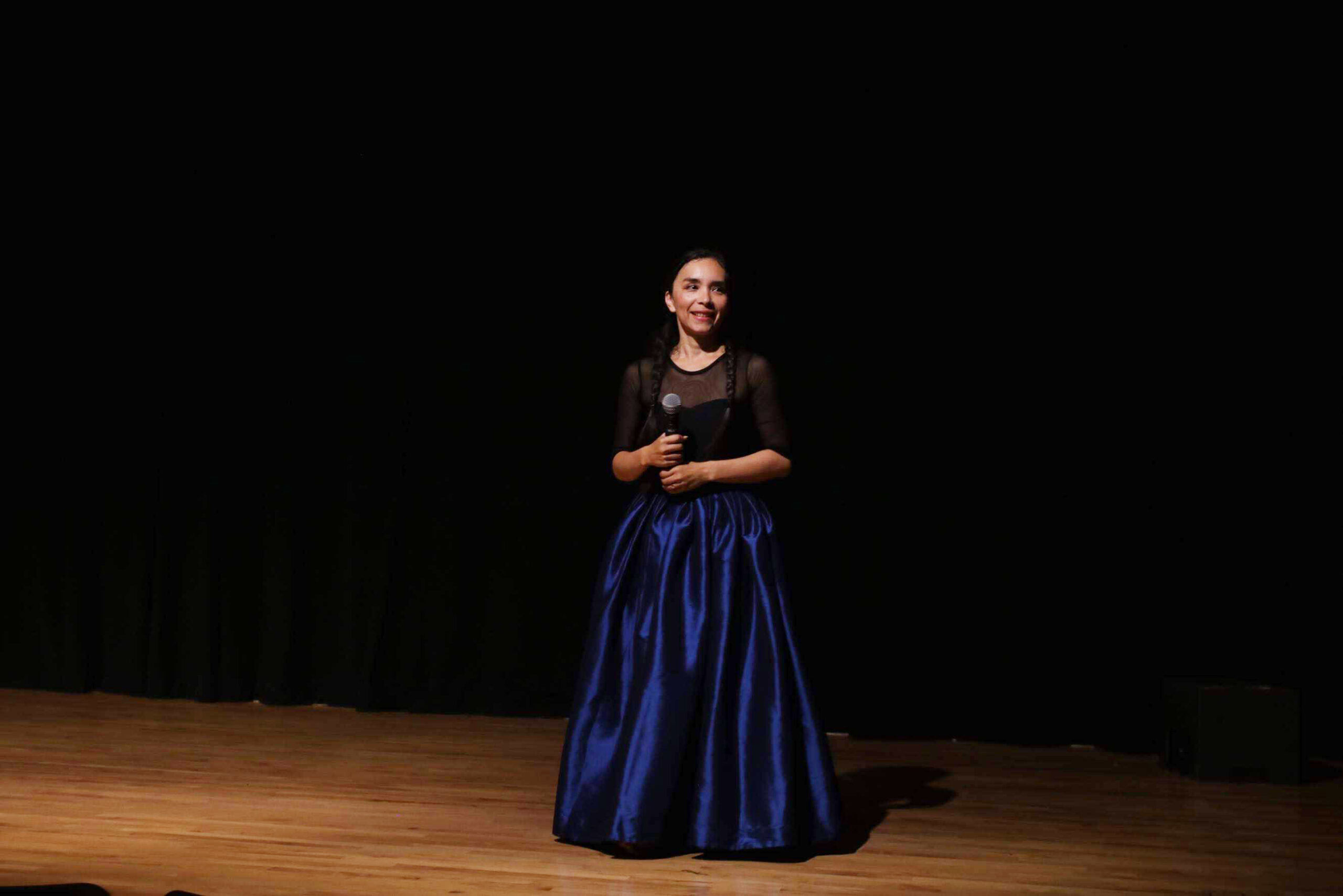Ibarguen displays Peruvian cultures through dance
November 22, 2019
 Aadhya Ramineni
Aadhya RamineniLiterature, Peruvian art and dance: an unlikely combination unlike most artists typically hosted at Bowdoin. On Tuesday night, Vannia Ibarguen brought these disciplines together in her performance “Retablo Peruano” in Kresge Auditorium.
“Retablo Peruano” translates roughly to “Peruvian altarpiece.” A retablo is a sculptural work created by indigenous Peruvian artists, depicting scenes of daily life or exceptional historical events.
Associate Professor of Romance Languages and Literatures Carolyn Wolfenzon Niego, who organized Ibarguen’s visit to campus, elaborated on the cultural significance of her performance.
“It’s kind of difficult to show a student that has never been [to] Latin America how the indigenous presence and how the values of the indigenous people—in this case Peru—are so different from the West,” said Wolfenzon Niego. “And how they clash and how sometimes they adapt, or [how] sometimes they mix [and] sometimes they do not mix very well.”
Vannia Ibarguen holds a bachelor’s degree in computational science from the University of Lima, but after years in the field she decided to pursue her dance hobby more seriously. She eventually earned her Masters of Fine Arts from the University of Maryland and a masters degree in stage lighting from California State University Long Beach.
Ibarguen is now the art director of the Global Water Dances initiative, communications manager of the Peruvian Dance Council and organizer of Encuentros de Pura Danza, an annual dance festival in Lima. She has lived in Peru, Colombia and Maryland, and she currently calls Southern California home.
Wolfenzon Niego first met Ibarguen when they were eight years old at the Municipal Ballet of Lima. Wolfenzon Niego, who is now teaching a seminar, “The War of Latin American Worlds,” this semester, invited Ibarguen to come illustrate Peru’s diverse cultures through dance. Ibarguen choreographed this unique performance specifically for Bowdoin.
The performance was divided into three sections, and Ibarguen portrayed a different character in each:
Part one, “Cholo soy,” I am cholo, I am mestizo, I am part indigenous.
Part two, “La hija del lago,” The daughter of the lake.
Part three, “Yma Sumac,” The name of a most unusual, marvelous Peruvian singer, an indigenous woman turned Hollywood star decades ago.
Students in Wolfenzon Niego’s seminar have discussed in detail the day-to-day clashes between tradition and modernity in Latin America, specifically how Western and indigenous cultures are still negotiating the terms of their relationship through a historical-cultural process she calls “transculturation.”
“I realized that it would be interesting if the students were able to see in a different way the combining of different arts, literature and dance—this clash that I’m talking about,” said Wolfenzon Niego. “This performance is about hybridity, about mixing and remixing cultures.”
Ibarguen agrees, placing emphasis on the importance of diversity in an academic context.
“I think it’s really good to be aware of diversity, and I think it makes you a better person,” said Ibarguen. “Specifically, in college … you are absorbing different ideas, positions and you need to create your own way you think about the world.”
Wolfenzon Niego hopes that she will be able to bring more performers like Ibarguen to campus that connect seemingly conflicting media and disciplines.
“[Students] should be more exposed to this type of combination between the arts, because now everything is very hybrid in general, not just the identities, but also the way we teach,” she said.
Danielle Quezada contributed to this report.

Comments
Before submitting a comment, please review our comment policy. Some key points from the policy: